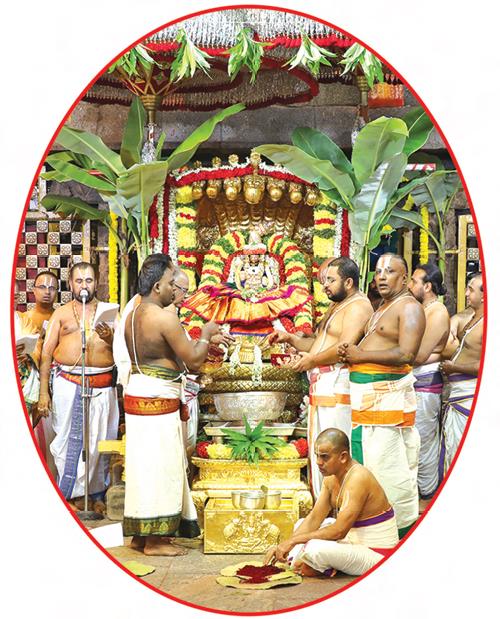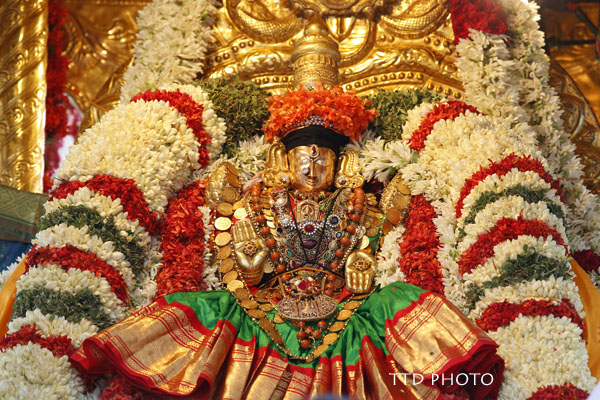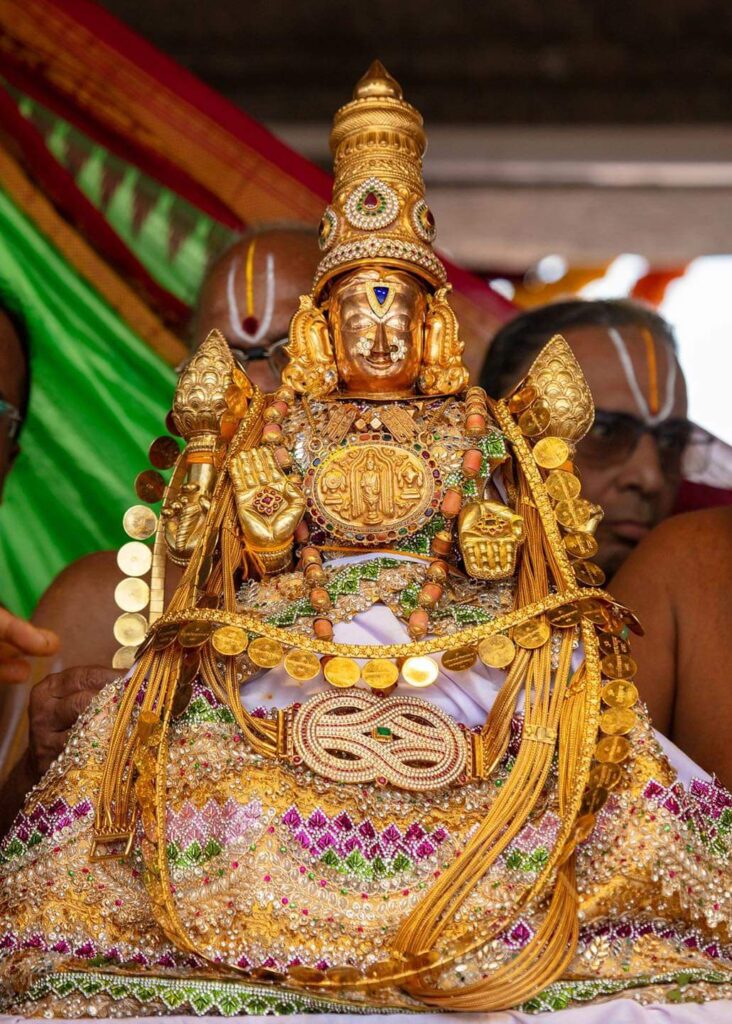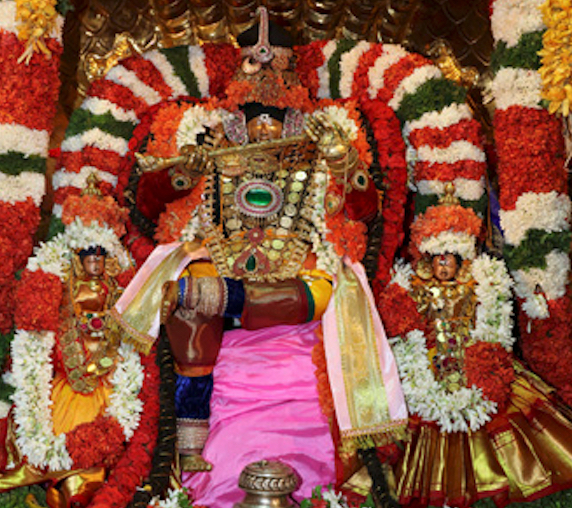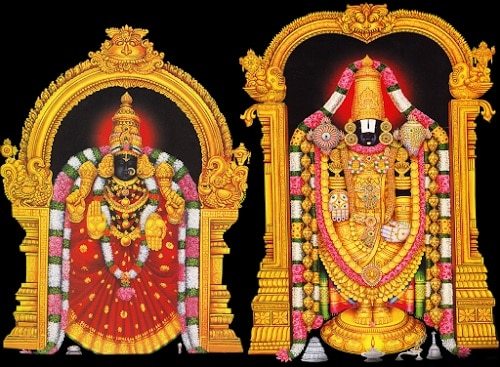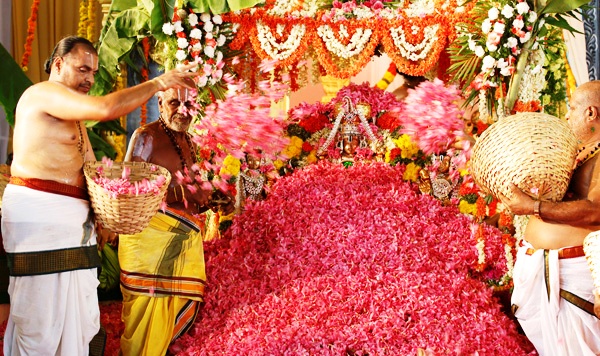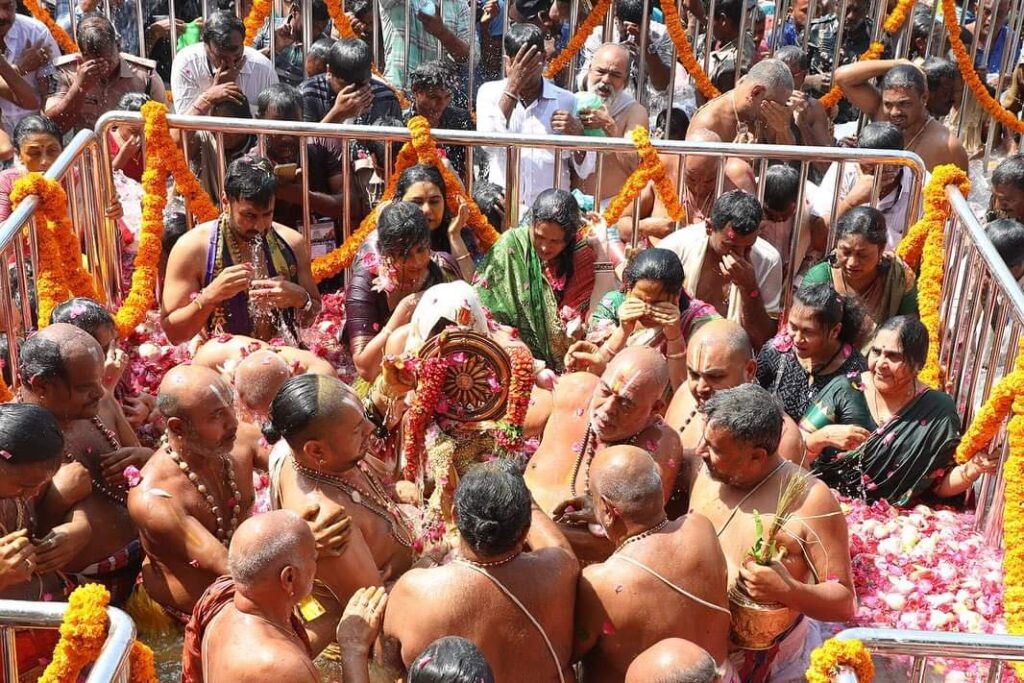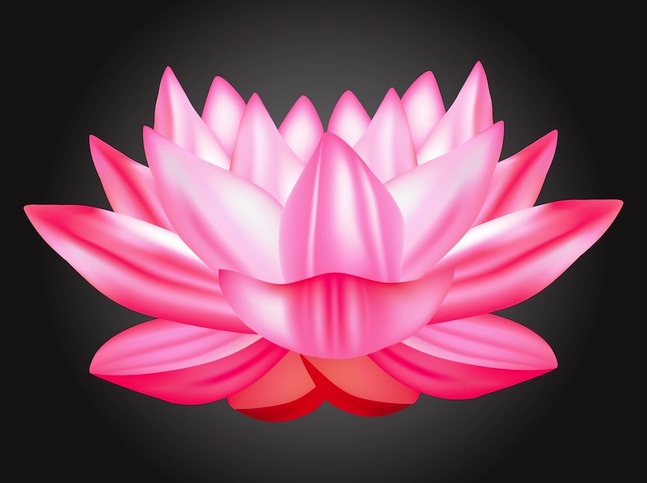This article is about Laksha Kumkumarchana at Padmavathi Temple – Tiruchanur Sri Padmavathi Devi temple – Tiruchanur Goddess Padmavathi is the queen of Lord Srinivasa and enjoys a separate identity with equal status. The Goddess is inseparable and enjoys an equal position as she is a Purushakara or instrumental in protecting the devotees from the Read More
Tag: Tiruchanur
Tiruchanur (also known as Alamelu Mangapuram) is a suburb and neighborhood of Tirupati and is located in Tirupati district of the Indian state of Andhra Pradesh
Chatusthanarchana – Tiruchanur
ChatusthanArchana Visesham – Tiruchanur The puja vidhi during Brahmotsavams are in the form of Chatusthanarchana (ritual). Every day during the annual fete, the Chatusthanarchana will be performed twice, both in the morning and in the evening at Sri Padmavathi Ammavari Temple. In the morning this ceremony is observed in Yagashala between 5 am to 6 Read More
Glory of Divine Mother – Tiruchanur
The Glory of the DIVINE MOTHER Sriman Narayana, the Almighty manifests Himself in five distinct forms namely the Param, Vyuham, Vibhavam, Antaryami and Archa. In all these forms the Lord is always inseparably united with His divine consort Sri Mahalakshmi. The Parabrahamam is identified only by the presence of the “Sri”, the Divine Mother. The Read More
Avatarotsavams of Sundara Raja Swamy
Avatarotsavams – Three Days Sundararaja Swamy is a Self-emerged God in the auspicious star Uttarabhadra in the Jyestha Masa of Lunar Calendar. The main events of the Avatarotsavams are distributed over the three days beginning on the day with Stabhisha Nakshatra and ending on the day with Uttarabhadra Nakshatra (The Birth Star of Sri Sundararaja Read More
Sri Sundara Raja Swamy
One gracious form of Sri Mahavishnu is that of Sri Sundara Raja Swamy. Location Sri Sundara Raja Swami’s temple is situated as a sub-shrine in the temple complex of Sri Padmavati Ammavaru, the Consort of Sri Venkateswara of Alamelu Mangapuram, Tiruchanur. This temple of Sri Sundararaja Swami is also known as the temple of Sri Read More
Padmavati Devi – Legend
Goddess Padmavati Devi Goddess Padmavati Devi also known as ‘ALARMEL MANGA’, the consort of Lord Srinivasa, made Tiruchanur Her abode. She is glorified as the queen of the Universe. She represents the Lord’s Sankalpa (wish). The Divine Mother is concerned for the miserable plight of Her children (devotees) by appealing to the Lord to forgive Read More
Pushpayagam to Padmavati Devi
Pushpayagam (Yagam with Flowers) in Tiruchanur Pushpayagam is performed to Sri Padmavati Devi in Tiruchanur. This is an annual festival that is performed the day after the completion of the annual Brahmotsavam on the asterism of Karthika masa, on the day after Panchami Theertham. After the daily pujas, Goddess Sri Padmavati Devi is seated on Read More
Panchami Theertham Mahotsav
Panchami Theertham Tiruchanur is the sacred place where Lord Srinivasa did penance for 12 years to get back Padmavati Devi, who always remains in his heart. Sri Mahalakshmi left Vaikuntam angrily with the misdeed of sage Brighu. Sri Maha Vishnu himself dug the tank. He brought golden lotus flowers and planted them in the tank. Read More
Lotus Flower
Padmavathi was born in Lotus Goddess Padmavati Devi emerged from Padmasarovar in the Lotus. This is why the Pushkarini (temple tank) is known as ‘Padmasarovar’ and the Goddess Sri Padmavati Devi is seated in the Padmasana or Lotus pose named ‘Padmavati‘. In Tiruchanur holding Lotus. Lotus stands high among flowers Among the flowers, the Lotus Read More
Why Padmavathi is not in Tirumala
Why Padmavathi is not in Tirumala Story Behind The husband, Srinivasa lives up the Seven Hills in ‘Ananda Nilaya’! His wife Alamelu Manga lives in Tiruchanur, down the hills in ‘Shanti Nilaya’! Doesn’t it look queer? There seems to be a special reason for this. Long ago, Padmavathi used to live in ‘Shanti Nilaya’, a Read More
